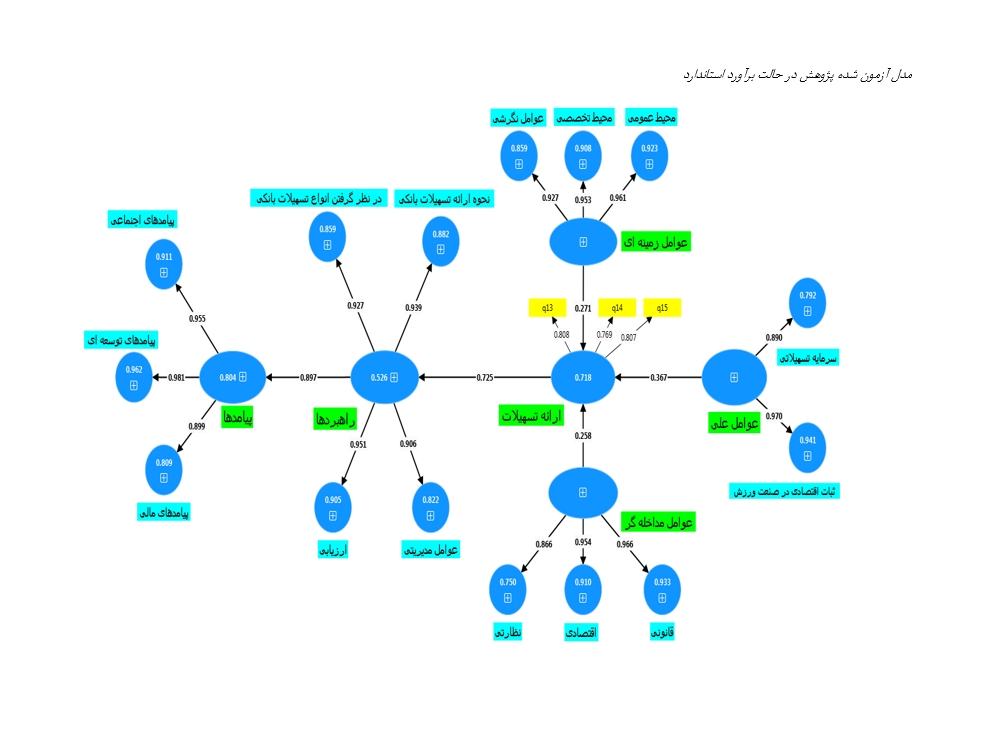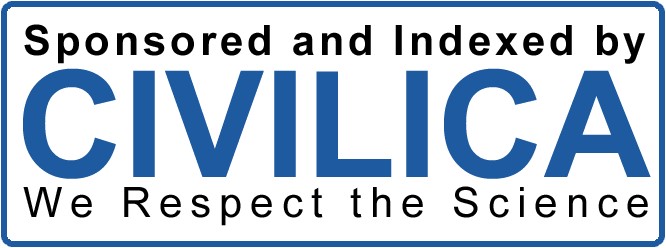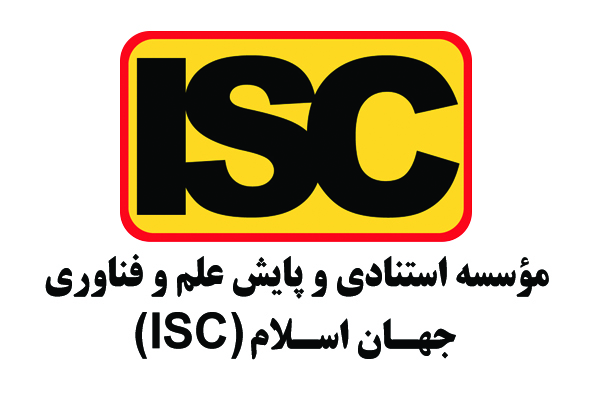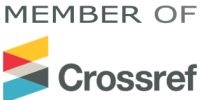Designing a Model for Providing Banking Credits in the Development of Sports Businesses
Keywords:
Economic growth, credit capital, economic stability, sports industry, sports businessesAbstract
The aim of this study was to design a model for the provision of bank credit to support the development of sports businesses. This research employed an exploratory mixed-methods design (qualitative-quantitative). In the qualitative phase, the research population consisted of university professors, managers and sports entrepreneurs, as well as staff and heads of public banks and private financial institutions. For conducting interviews, a purposive judgmental sampling method was used. In this phase, 20 interviews were conducted with experts familiar with the research subject. The data collection tool in the quantitative phase was a questionnaire derived from the qualitative findings. In the qualitative phase, coding methods were used to analyze the collected data. In the quantitative phase, the statistical population included all managers of sports businesses operating in both the production and service sectors (such as sports manufacturers, sports club managers, sports shop managers, and managers of sports-oriented knowledge-based companies) in Golestan Province. Based on Cochran’s formula, the sample size was determined to be 384 individuals. Descriptive statistics were used to describe demographic characteristics and research variables, and data analysis was performed using SPSS version 25. To examine the research model and test the hypotheses, Smart PLS software was used (significance level 0.05). The results of the qualitative coding revealed that the factors related to designing a bank credit model for the development of sports businesses include 16 axial codes (credit capital, economic stability in the sports industry, general environment, specialized environment, attitudinal, legal, economic, regulatory, types of bank credit, methods of granting bank credit, managerial, evaluation, social outcomes, developmental outcomes, and financial outcomes) and 91 open codes. In the quantitative part, the findings indicated that causal factors (such as the profitability of the sports industry) have a positive and significant effect on the provision of bank credit for the development of sports businesses. Additionally, the results showed that contextual factors (such as governmental support for sports) positively and significantly influence the provision of bank credit. Another finding revealed that intervening factors (such as strict banking regulations) also have a positive and significant effect on the provision of bank credit. Finally, the research demonstrated that the impact of strategies on the outcomes of bank credit in the development of sports businesses is positive and significant. The results confirmed that the proposed research model has a good overall fit.
Downloads
References
Atghia, N., & Nazarian, A. (2024). Economic sustainability: A solution to the financial problems of football clubs. Sport, Business and Management, 14(1), 56-79. https://doi.org/10.1108/SBM-03-2023-0024
Azadi, A., Rahimi, G., Nazari, R., Bond, A., Widdop, P., & Parnell, D. (2023). Presenting a model for the role of sport on Iran's sustainable development: An approach to the role of sport in GDP Topological Network Properties of the European Football Loan System. Sports Business Journal, 3(1), 37-52. https://doi.org/10.22051/sbj.2023.41626.1048 10.1080/16184742.2019.1673460
Buszko, M. (2020). Support for sport as an element of banks' corporate social responsibility policy. Journal of Physical Education and Sport, 20(5), 2820-2828. https://doi.org/10.7752/jpes.2020.s5383
Dehghan Manshadi, M. (2022). Challenges of implementing partnership contracts in the Iranian banking system and strategies for reform them. Journal of Islamic Economics and Banking, 11(40), 7-42. http://mieaoi.ir/article-1-1077-fa.html
Duan, Y. P., Li, P., Meng, D., Bu, T., Liu, X. W., Popovic, S., & Matic, R. M. (2022). The effects of demographic trends on the high-quality development of the Chinese sports industry. Sustainability, 14(2), 1039-1051. https://doi.org/10.3390/su14021039
Elshaer, I. A. (2023). Investment in the sports industry in Saudi Arabia and its impact on the quality of life of football fans. Journal of Law and Sustainable Development, 11(12), 1-25. https://doi.org/10.55908/sdgs.v11i12.2236
Emami, A., Emami, F., & Afshari, M. (2020). A paradigm model of investment development in Iran Sport. Sport Management Journal, 12(3), 759-788. https://doi.org/10.22059/jsm.2019.287740.2315
Ghanbari Firoozabadi, A., keshkar, S., & Kargar, G. A. (2020). Goals, constraints and achievements of sponsorship of governmental and private banks in Iran. Sport Management Journal, 12(2), 333-347. https://doi.org/10.22059/jsm.2018.235929.1876
Khatibi, A., Heydari Nejhad, S., Shetab Booshehri, S. N., & Hashemi, E. (2020). The obstacles and solutions for the development of women's sports financial resources in Iran. Sport Management Studies, 12(89), 89-112. https://doi.org/10.22089/smrj.2020.8249.2827
Koning, R. H., & Van Ours, J. C. (2021). How sports can help economics. De Economist, 169, 1-13. https://doi.org/10.1007/s10645-020-09380-z
Li, M., Shi, Y., & Peng, B. (2022). The analysis and research on the influence of sports industry development on economic development. Journal of Environmental and Public Health, 2022(1), 1-7. https://doi.org/10.1155/2022/3329174
Liu, Y., & Dong, B. A. U. Z. X. (2022). Healthy and sustainable development of sports economy based on artificial intelligence and mental model. Frontiers Psychology, 13, 956682. https://doi.org/10.3389/fpsyg.2022.956682
Mirehie, M., & Cho, I. (2022). Exploring the effects of the COVID-19 pandemic on sport tourism. International Journal of Sports Marketing and Sponsorship, 23(3SP - 527), 546. https://doi.org/10.1108/IJSMS-04-2021-0081
Rajesh, C. B., Hussain, S., Cherappurath, N., Ramezani, F., Keshtidar, M., & Moodi, D. (2021). Role of socio-economic status and emotional intelligence on sports attainments: A cross-sectional study with women athletes in Kerala, India An analysis of the barriers to financing sport entrepreneurs by Q method. Materials Today: Proceedings, 37(1), 2334-2340. https://doi.org/10.1016/j.matpr.2020.08.007 10.22059/jsm.2019.280621.2264LA - Persian
Rezaei, N., & Norouzi, A. (2020). Economic policy uncertainty, banks' lending decisions. Investment Knowledge, 8(32), 31-329. https://jik.srbiau.ac.ir/article_15139.html?lang=en
Sadeghpour, R., Esmaeili, M., & Al-Sadat Zargar, T. (2024). Conceptual model of the role of financial institutions on the development of the sports community. Governmental Accounting, 10(20), 143-156. https://doi.org/10.30473/gaa.2024.71240.1734
Saeedi, E., & Mousavi, E. (2024). Identifying the investment opportunities of the private sector in sports in Alborz province. Sport Marketing Studies, 4(4), 113-139. https://doi.org/10.22034/sms.2023.139510.1241
Setyaningtyas, T., Kirana, A. N., & Wicaksono, M. A. (2021). Relationship analysis of destination image, sports involvement, event quality and travel motives as an antecedent factors on revisit intention in recurring running sports-event. The Winners, 22(2), 137-146. https://doi.org/10.21512/tw.v22i2.7434
Tari, F. A. (2020). The effect of bank facilities on the investment of industry, mining and agriculture sectors. Modern Economy and Business, 14(2), 1-24. https://jnet.ihcs.ac.ir/article_4535.html?lang=fa
Wei, P., Liu, P., & Duan, J. (2017). Construction of index system of sports industry and economic development in China. Technical Bulletin, 55, 498-503. https://doi.org/10.2147/TB.S257844
Weston, T. (2024). Contribution of sport to society and the economy. https://lordslibrary.parliament.uk/contribution-of-sport-to-society-and-the-economy
Yang, M., Zhou, H., Li, Y., & Zhang, J. (2023). Efficiency Evaluation and Influencing Factors of Sports Industry and Tourism Industry Convergence Based on China's Provincial Data. Sustainability, 15(6), 5408-5420. https://doi.org/10.3390/su15065408
Zhang, J. J., Kim, E., Mastromartino, B., Qian, T. Y., & Nauright, J. (2018). The sport industry in growing economies: critical issues and challenges. International Journal of Sports Marketing and Sponsorship, 19(2), 110-126. https://doi.org/10.1108/IJSMS-03-2018-0023
Zhang, W., & Mou, C. (2023). Analysis and improvement of sports industry development and public health strategy under low-carbon economic structure. Frontiers Public Health, 11, 1152452. https://doi.org/10.3389/fpubh.2023.1152452

Downloads
Published
Submitted
Revised
Accepted
Issue
Section
License
Copyright (c) 2025 Elmira Valipour (Author); Taher Bahlekeh; Zeinolabedin Falah, Nasser Bay (Author)

This work is licensed under a Creative Commons Attribution-NonCommercial 4.0 International License.











